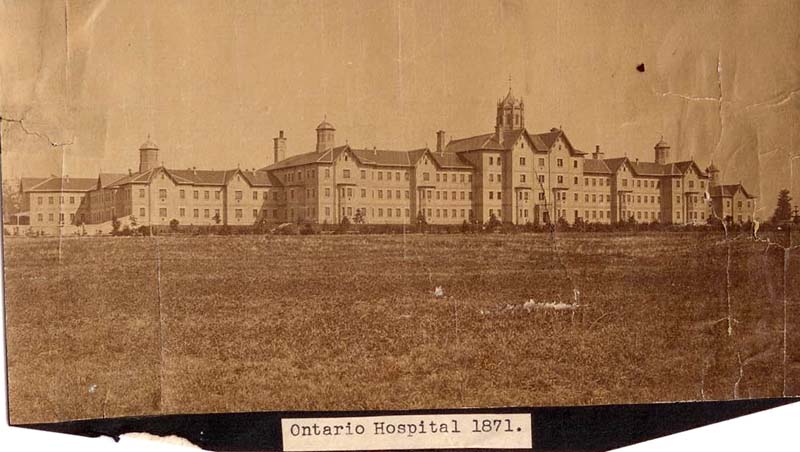Urban and Rural Life, and the Asylum

The completed original building of the former London Asylum for the Insane, 1871. RMHCL
1 |
2 |
3 |
4
The emergence of the public asylum in late 19th century Canada coincided with the rise of urban-industrial culture. The rapid expansion of urban areas created new opportunities in industrial labor, which attracted people to cities and triggered the development of a working class. This led to a rise in immigration, changes to class structure, and an intensified focus on productivity. Industrialization intensified social distress, while urban life fractured the family unit, and led to the breakdown of traditional forms of care.
Amid the pressures of rapid social change, society came to depend upon institutions to solve the social problems caused by urbanization, industrialization, and social displacement. Institutions could provide and enforce social order, simultaneously supporting Victorian ideals of propriety, and meeting the expectations for progress that were generated by an emerging capitalist society. The creation of asylums in Ontario was greatly influenced by the progressive atmosphere of the industrial period, resulting transformation of social values, and society's stubborn grip on Victorian ideals.
The perceived evils of urban life led to the idealization of the rural past, which affected conceptions of mental illness and treatment. Based on the belief that people were over-stimulated by the demands of urban life, asylums were re-creations of pre-industrial rural life. They were intended to treat patients by providing them with a sane environment in which to recover. Typical of 19th century asylum design, the London Asylum for the Insane was located outside the city centre, which allowed for the removal of patients from an urban setting, while maintaining reasonable proximity to the necessary resources and services available in the city. The rural location required the Asylum to be self-sufficient, and encouraged the use of moral therapy for patients. In addition to its treatment benefits, moral therapy was of practical use to the Asylum because patient workers ensured the labor and production demands necessary for a functional institution were met.